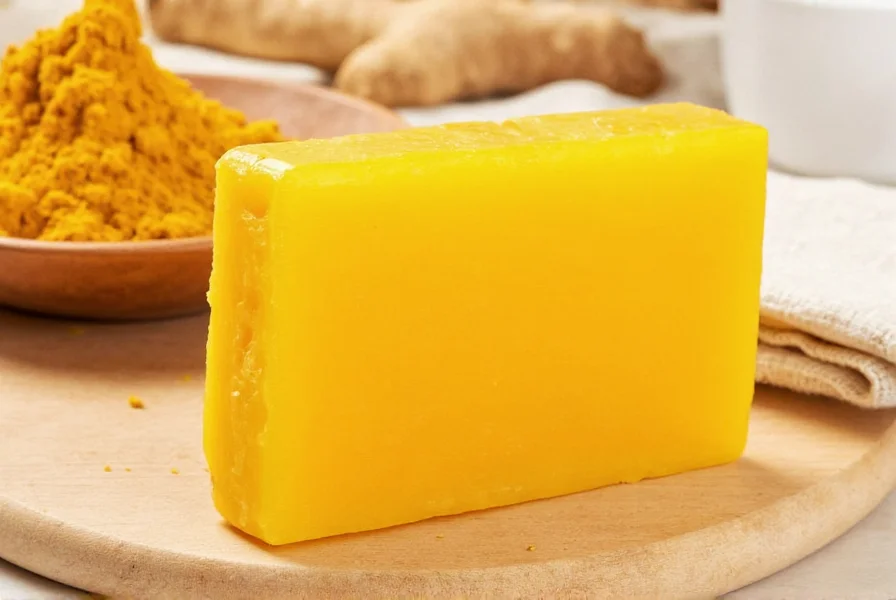Curcumin, the active compound in turmeric, has gained significant attention in skincare formulations. Turmeric soap represents one of the most accessible ways to incorporate this traditional ingredient into daily facial care routines. While research on turmeric soap specifically remains limited, studies on curcumin's topical application provide valuable insights into its potential benefits and limitations for facial skin.
The Science Behind Turmeric for Facial Skin
Curcumin, turmeric's primary bioactive component, demonstrates potent anti-inflammatory and antioxidant properties according to multiple dermatological studies. When formulated into soap, these properties can potentially help address common facial skin concerns. The alkaline nature of traditional soap can affect curcumin's stability, which explains why some formulations include additional ingredients to enhance bioavailability.
Research published in Phytotherapy Research indicates that curcumin inhibits inflammatory pathways that contribute to acne development and post-inflammatory hyperpigmentation. Unlike many commercial acne treatments that cause excessive dryness, turmeric's anti-inflammatory action may provide gentler management of breakouts while supporting skin barrier function.

Evidence-Based Benefits of Turmeric Soap
When evaluating does turmeric soap lighten skin or improve complexion, scientific evidence suggests several mechanisms:
- Anti-acne properties: Curcumin's antimicrobial effects may help reduce Propionibacterium acnes, the bacteria associated with inflammatory acne
- Hyperpigmentation reduction: Studies show curcumin inhibits tyrosinase activity, potentially helping with dark spot fading
- Anti-inflammatory action: Reduces redness and swelling associated with rosacea and acne
- Antioxidant protection: Neutralizes free radicals that contribute to premature aging
A 2020 clinical trial in the Journal of Cosmetic Dermatology found that topical curcumin formulations significantly improved acne lesions and reduced post-acne marks after 8 weeks of consistent use. However, the study used a specialized serum formulation rather than soap, highlighting the need for more product-specific research.
Practical Considerations for Facial Use
Understanding how to use turmeric soap for face properly maximizes benefits while minimizing potential issues:
| Usage Factor | Recommendation | Rationale |
|---|---|---|
| Frequency | Start with 2-3 times weekly, increase to daily if tolerated | Allows skin to adjust while monitoring for sensitivity |
| Application Time | 30-60 seconds massage, rinse thoroughly | Minimizes staining risk while allowing active absorption |
| Water Temperature | Lukewarm water | Prevents excessive drying and irritation |
| Follow-up Routine | Apply moisturizer immediately after patting dry | Counteracts potential drying effects of soap base |
Managing Common Concerns
The most frequent question does turmeric soap remove dark spots requires nuanced understanding. While curcumin shows promise for hyperpigmentation, results vary significantly based on:
- Individual skin type and sensitivity
- Concentration of active ingredients
- Consistency of use (minimum 4-8 weeks)
- Underlying cause of pigmentation
Temporary yellow staining remains the most common issue with turmeric soap. This typically washes off with regular cleansing but can linger on very dry skin. Using a gentle exfoliant 1-2 times weekly may help prevent buildup. For those concerned about turmeric soap side effects, patch testing behind the ear for 48 hours before facial application is strongly recommended.
Selecting Quality Turmeric Soap
When searching for the best turmeric soap for acne or other concerns, consider these factors:
- Ingredient transparency: Look for products listing curcumin concentration
- Base formulation: Glycerin-based soaps tend to be less drying than traditional soap bases
- Additional beneficial ingredients: Look for complementary ingredients like neem, sandalwood, or aloe
- Avoid: Excessive artificial colors, harsh sulfates, or unrealistic claims
Natural turmeric soap for sensitive skin should contain minimal additional ingredients and avoid known irritants. Commercial formulations often include encapsulated curcumin to reduce staining while maintaining efficacy. For those with extremely sensitive skin, starting with lower concentration products (0.5-1% curcumin) is advisable.
Realistic Expectations and Limitations
Turmeric soap works gradually and won't produce dramatic results overnight. Those expecting immediate turmeric soap for glowing skin transformations may become disappointed. The most significant improvements typically appear after consistent use for 6-8 weeks.
It's crucial to understand that turmeric soap alone cannot address all skin concerns. For severe acne, melasma, or other significant skin conditions, consult a dermatologist. Turmeric soap may complement professional treatments but shouldn't replace them for serious concerns.
Frequently Asked Questions
Can turmeric soap cause skin discoloration?
Turmeric soap may cause temporary yellow staining, particularly on dry skin or with prolonged contact. This typically washes off with regular cleansing. To minimize staining, rinse thoroughly and follow with a gentle toner. The staining doesn't indicate actual skin discoloration and fades within hours.
How long does it take to see results from turmeric soap?
Most users notice subtle improvements in skin texture and reduced redness within 2-4 weeks of consistent use. Significant improvements for concerns like acne or hyperpigmentation typically require 6-8 weeks. Individual results vary based on skin type, specific concerns, and the product's curcumin concentration.
Is turmeric soap suitable for all skin types?
Turmeric soap generally works well for oily and combination skin types. Those with dry or sensitive skin should look for formulations with added moisturizing ingredients and start with less frequent use. People with known sensitivity to turmeric or related plants should avoid it. Always perform a patch test before regular facial use.
Can I make turmeric soap at home?
Yes, but homemade versions present challenges. Fresh turmeric stains more than processed curcumin, and proper pH balance is crucial for facial skin. Commercial formulations often use encapsulated curcumin for better stability and reduced staining. If making your own, use minimal turmeric powder (1/4 teaspoon per pound of base) and test thoroughly before facial application.
Should I use turmeric soap in the morning or evening?
Evening use is generally preferred as it allows the active ingredients to work overnight without sun exposure. If using in the morning, follow with broad-spectrum SPF 30+ sunscreen, as turmeric may increase photosensitivity in some individuals. Those with sensitive skin may benefit from alternating morning and evening use initially.










 浙公网安备
33010002000092号
浙公网安备
33010002000092号 浙B2-20120091-4
浙B2-20120091-4